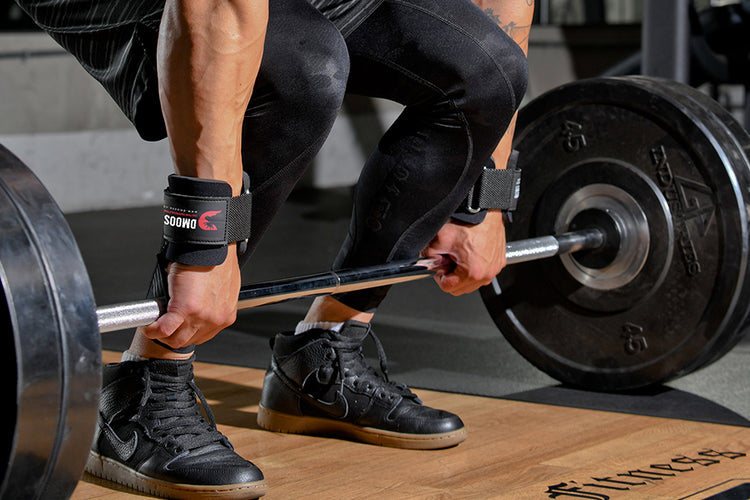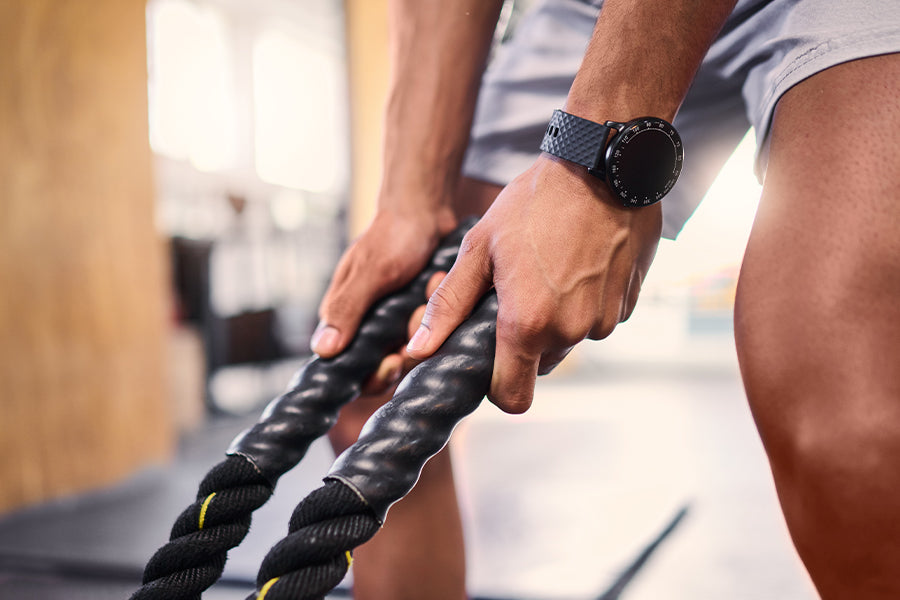Picture this: You're in the middle of a challenging weightlifting session, determined to push your limits and reach new heights of strength and power. As you grip the barbell, your muscles are engaged and ready, but you feel a sudden slip, a momentary loss of control. Frustration washes over you as you struggle to maintain your grip, hindering your progress and leaving you feeling defeated. If this scenario sounds all too familiar, fear not, for in this article, we will unravel the secrets to fixing the issue of losing your grip during lifting.
In the following sections, we will explore the common causes behind grip weakness, delve into the potential consequences of this issue, and, most importantly, equip you with a comprehensive toolkit of effective techniques and exercises to regain and strengthen your grip. Say goodbye to slipping weights and missed opportunities, and say hello to a powerful, unyielding grip that will elevate your lifting game to new heights. From grip-specific exercises to strategic grip training methods, we'll leave no stone unturned in our quest to help you overcome the grip-related obstacles that have been holding you back.
So, tighten your grip and prepare for a gripping adventure filled with knowledge, empowerment, and the tools you need to conquer the issue of losing your grip during lifting. Get ready to take your lifting prowess to the next level and unleash your true strength potential. It's time to regain control, defy the limits, and reignite your passion for lifting. Let's dive in and fix that grip once and for all!
Understanding the Causes of Grip Weakness

To effectively address the issue of losing your grip during lifting, it's crucial to understand the underlying causes. Grip weakness can stem from various factors, including muscular imbalances, improper technique, lack of grip-specific training, and even certain medical conditions.
One common culprit is neglecting specific grip training exercises. Many lifters focus primarily on compound movements and neglect direct grip work, leading to underdeveloped grip strength. Additionally, improper lifting techniques, such as relying too heavily on straps or improper grip placement, can contribute to grip weakness over time.
Muscular imbalances within the forearm and hand muscles can also lead to grip issues. The muscles responsible for gripping, such as the forearm flexors and extensors, need to be balanced in strength and coordination to maintain a firm grip during lifting. Furthermore, certain medical conditions, such as arthritis or carpal tunnel syndrome, can affect grip strength and control.
If you suspect an underlying medical issue, it's essential to consult with a healthcare professional for proper diagnosis and guidance. By understanding the causes of grip weakness, you can take targeted steps to address and overcome these limitations. In the following sections, we will explore effective strategies and exercises to strengthen your grip, enhance your lifting performance, and restore your confidence in the gym.
Effective Techniques to Improve Grip Strength: Mastering the Iron Handshake
Are you tired of feeling your grip holding you back from reaching your true lifting potential? It's time to unleash the power of the iron handshake and conquer the issue of losing your grip during lifting. This section will dive deep into a treasure trove of effective techniques and exercises that will transform your grip strength and elevate your lifting game to new heights.
The Double Overhand Grip
When performing exercises like deadlifts or rows, opt for the double overhand grip. This grip places equal pressure on both hands, challenging grip strength and building symmetrical power. While it may feel more challenging initially, persisting with this grip will reward you with increased grip endurance and control.
The Hook Grip
The hook grip is a game-changer for those seeking to conquer heavy lifts. This technique involves wrapping your fingers around the barbell and securing it with your thumb. The hook grip creates a lock-like effect, providing unparalleled security and preventing the bar from slipping out of your hands. It may take some time to get used to, but the hook grip will revolutionize your lifting experience once mastered.
Related Article: Hook Grip Deadlift: Why Every Lifter Should Know This Powerful Technique
Thick Bar Training
Enter the world of thick bar training and embrace the power of unconventional training tools. Thick bar implements, such as thick barbells or specialized grip attachments, increase the diameter of the bar, forcing your grip muscles to work harder. This unique form of training enhances grip strength, forearm development, and overall hand stability, translating into improved performance in all your lifts.
Grip-Specific Exercises
Integrate targeted grip exercises into your training routine to isolate and strengthen your grip. These include plate pinches and wrist curls with a barbell or dumbbell. These exercises target the forearm and hand muscles, promoting increased grip strength and endurance.
Grip Strengthening Tools: Unleashing the Power of Lifting Hooks and Lifting Straps
When it comes to conquering the issue of losing your grip during lifting, two valuable allies can provide a helping hand: lifting hooks and lifting straps.
These ingenious tools can assist you in maintaining a secure grip, allowing you to focus on the targeted muscles and push beyond your limits. Let's explore how lifting hooks and straps can be game-changers in your quest for enhanced grip strength and lifting performance.
Lifting Hooks
Lifting hooks are designed to take the strain off your grip and transfer the weight to your wrists and forearms. Securely hooking onto the bar or handles provide additional support and alleviate the pressure on your fingers.
This can be particularly beneficial when performing exercises like pull-ups, shrugs, or heavy deadlifts, where grip fatigue may hinder your progress. Lifting hooks allow you to maintain a firm grip for longer, enabling you to focus on engaging the target muscles and maximizing your gains.
DMoose Lifting Hooks are designed to alleviate the strain on your grip and transfer the weight to your wrists and forearms. Securely hooking onto the bar or handles provides additional support, ensuring you can maintain a firm grip during demanding exercises such as pull-ups, heavy deadlifts, or shrugs. With Dmoose lifting hooks, you can elevate your lifting performance and challenge yourself to new heights.
Lifting Straps
Lifting straps are another valuable tool that can enhance your lifting experience. These straps wrap around the bar or handles and then loop around your wrists, creating a secure connection between your hands and the weight.
By effectively bypassing the need for a firm grip, lifting straps enable you to lift heavier loads and perform more repetitions with greater ease. This can be especially advantageous when working on exercises like barbell rows, lat pulldowns, or heavy dumbbell presses. Lifting straps provide extra support to push your limits, targeting the desired muscles without grip-related limitations.
When it comes to heavy lifts and maximal efforts, DMoose Lifting Straps are a game-changer. These high-quality straps wrap securely around the bar or handles and loop around your wrists, creating a reliable connection between your hands and the weight.
By reducing the reliance on your grip strength, DMoose lifting straps enable you to lift heavier loads and perform more repetitions easily.
It's important to note that while lifting hooks and straps can be advantageous in certain situations, they are not meant to replace grip strength training. These tools should be used selectively and strategically to complement your grip training regimen, allowing you to push beyond grip limitations while still actively working on strengthening your grip.
Remember, the ultimate goal is to develop a strong and resilient grip that can support your lifting endeavors independently. Therefore, incorporate grip-specific exercises mentioned in this article alongside the strategic use of lifting hooks and straps.
By harnessing the power of lifting hooks and straps, you can confidently tackle heavy lifts, break through plateaus, and target specific muscle groups without being limited by grip fatigue. These tools serve as valuable aids, empowering you to achieve new levels of strength and endurance. Get ready to unleash your full lifting potential with a steadfast grip that knows no bounds!
Related Article: Should You Use Lifting Grips or Lifting Straps?
Integrating Strategies and Embracing the Stronger Grip

Congratulations on embarking on the journey to fix the issue of losing your grip during lifting! By now, you have gained valuable insights into various techniques, exercises, and tools to enhance your grip strength and overcome limitations. In this final part, we will bring it all together and provide actionable tips to integrate these strategies into your training routine effectively.
Gradual Progression
Building grip strength is a gradual process that requires patience and consistency. Start with lighter weights and gradually increase the intensity over time. This progressive overload stimulates the adaptation of your grip muscles, leading to increased strength and endurance.
Specific Grip Training
Dedicate a portion of your training sessions to specific grip exercises. Include exercises like plate pinches, farmer's walks, or grip-specific tools to target your grip muscles directly. Perform these exercises with proper form and focus to maximize their effectiveness.
Technique and Grip Placement
Pay attention to your lifting technique and ensure proper grip placement. Maintain a firm grip with all fingers engaged and avoid relying solely on the fingertips or the base of the palm. Experiment with different grip variations to find what works best for you in different exercises.
Strategic Tool Use
Incorporate lifting hooks or lifting straps strategically when needed. Use them sparingly, focusing on maintaining grip strength while pushing the limits of your other muscle groups. Remember, the goal is to develop grip strength over time, so use these tools as aids rather than becoming dependent on them.
Grip-Supporting Nutrition
Support your grip strength development with proper nutrition. Ensure you consume a well-balanced diet with adequate protein, healthy fats, and essential vitamins and minerals. Hydration is also crucial, as it promotes optimal muscle function, including the muscles of your hands and forearms.
Rest and Recovery
Allow your grip muscles time to rest and recover between training sessions. Like any other muscle group, they need sufficient recovery to adapt and grow stronger. Get ample sleep, practice stress management techniques, and consider incorporating active recovery exercises like stretching or foam rolling.
By integrating these strategies into your training routine, you will witness remarkable grip strength, endurance, and lifting performance improvements.
Embrace the challenge, stay consistent, and remain dedicated to your goals. As you overcome the issue of losing your grip during lifting, you will unlock your full potential, surpassing previous barriers and reaching new heights in your fitness journey.
Remember, building a stronger grip is about lifting heavier weights and gaining confidence, resilience, and control. Embrace the journey, celebrate your progress, and let the power of a steadfast grip propel you toward your fitness aspirations.
Now, it's time to put this knowledge into action. Grab that bar, feel the strength in your hands, and embark on an incredible lifting adventure with a grip that refuses to let go. The world of limitless possibilities awaits-embrace it with your newfound grip prowess and never look back!














